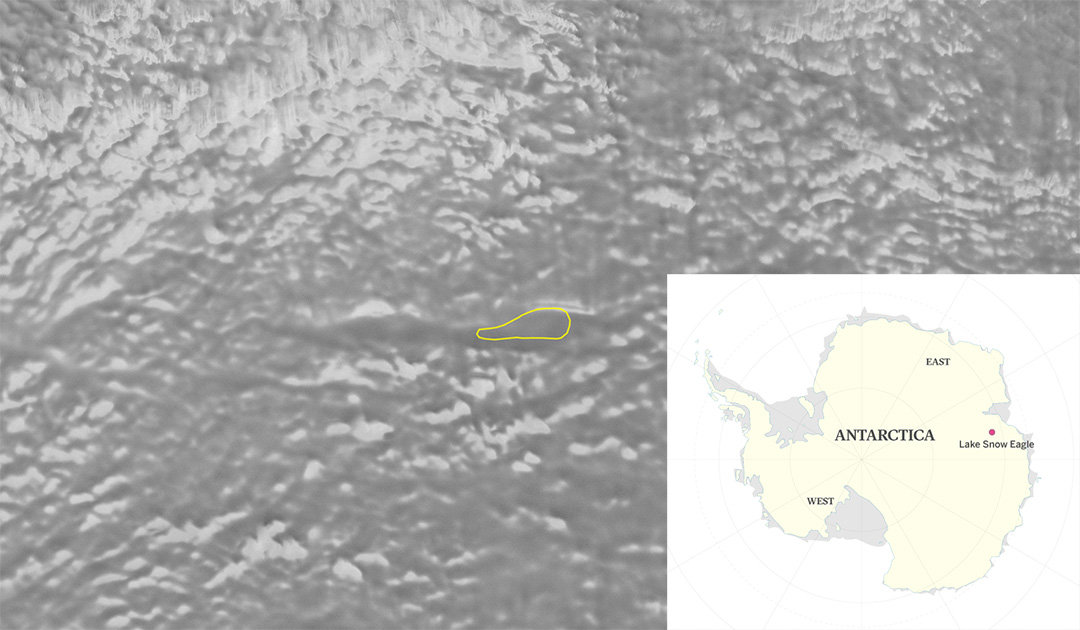
Antarctica still holds many mysteries: What did it look like before it froze? How have climate changes affected the white continent throughout its history? How might its ice sheets respond to global warming? An international team of scientists who discovered a lake under the East Antarctic Ice Sheet may be one step closer to deciphering these questions in a recent study. Its sediments may harbor the history of the world’s largest ice sheet from its earliest beginnings. The scientists published their discovery in the journal Geology.
“Lake Snow Eagle” is located in the highlands of East Antarctica’s Princess Elizabeth Land in a kilometer-long canyon just a few hundred kilometers from the coast. Although the lake is covered by a three-kilometer-thick layer of ice, satellite images showed the first evidence of its existence in the form of a smooth depression.

To confirm the assumption, the researchers spent a lot of time in a research aircraft over three years, repeatedly flying over the site and taking measurements with ice radar and various sensors that can register minute changes in the Earth’s gravity and magnetic field.
“This lake is likely to have a record of the entire history of the East Antarctic Ice Sheet, its initiation over 34 million years ago, as well as its growth and evolution across glacial cycles since then,” said polar expert Don Blankenship, senior scientist at the University of Texas Institute of Geophysics at Austin (UTIG) and co-author of the study. “Our observations also suggest that the ice sheet changed significantly about 10,000 years ago, although we have no idea why.”
Lake Snow Eagle is about 42 kilometers long and 15 kilometers wide, its area of 370 square kilometers is equal to that of Lake Garda. Its maximum depth is over 200 meters. It is not too far from the coast and the authors therefore suspect that the lake could provide information on how the East Antarctic Ice Sheet was formed and the role of the Antarctic Circumpolar Current. Scientists hope to gain information about the history of the ice sheet from the more than 300-meter-thick sediments at the bottom of the lake. These may contain river sediments older than the ice sheet itself.

With the help of radar measurements, subglacial lakes can be easily identified because water, unlike ice, reflects radar waves like a mirror. “I literally jumped when I first saw that bright radar reflection,” says Shuai Yan, a doctoral student at UT Austin’s Jackson School of Geosciences and lead author of the study. Combining the gravity and magnetic field measurements, Yan created a detailed image of Lake Snow Eagle, which is nestled in a rugged highland topography.
Now “only” samples of the lake sediments have to be taken through drilling in order to be able to close gaps in our knowledge about the glaciation of Antarctica. In addition, they could provide important information about the possible loss of the ice sheet due to climate change.
“This lake’s been accumulating sediment over a very long time, potentially taking us through the period when Antarctica had no ice at all, to when it went into deep freeze,” said Martin Siegert, a glaciologist at Imperial College London and co-author of the study. “We don’t have a single record of all those events in one place, but the sediments at the bottom of this lake could be ideal.”
Julia Hager, PolarJournal
More on the subject:





